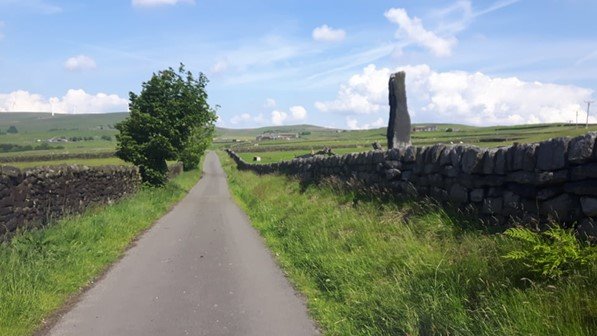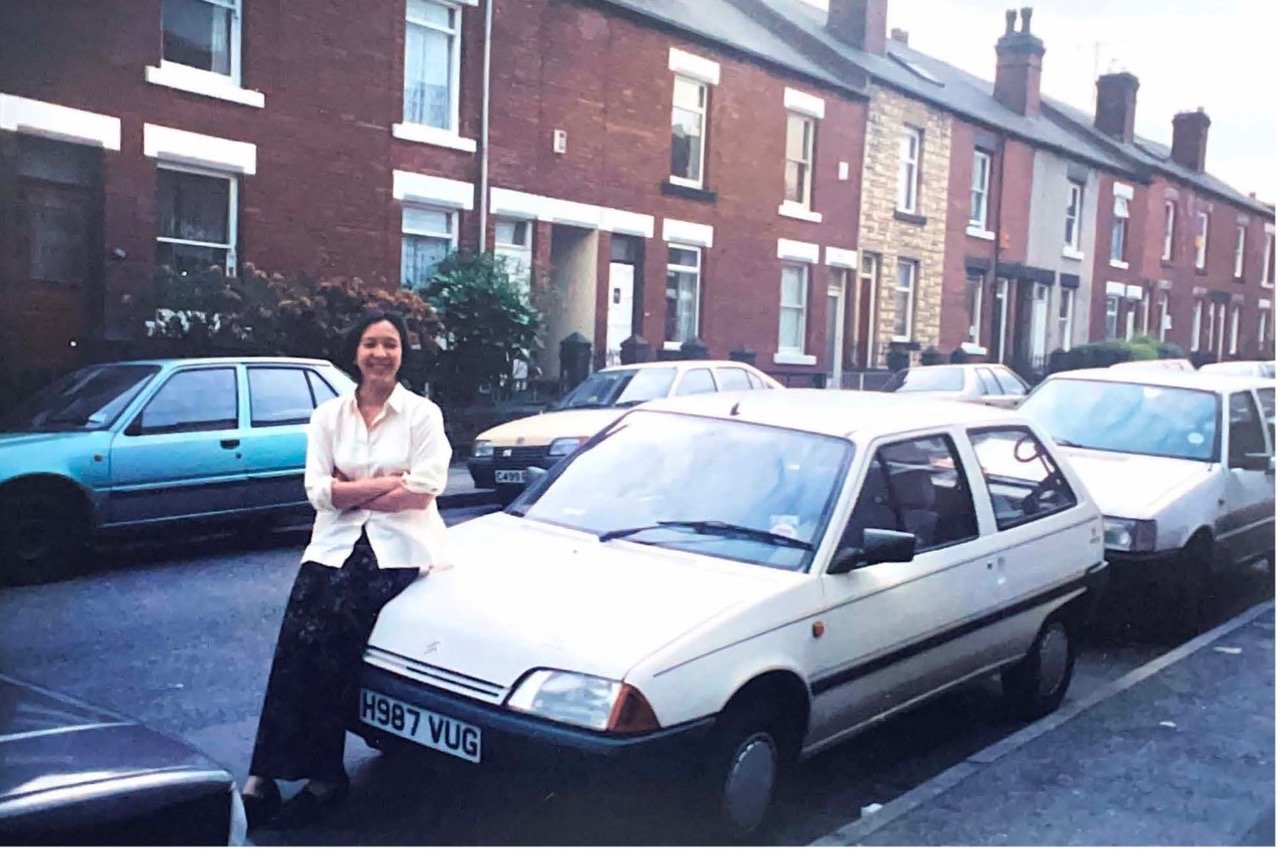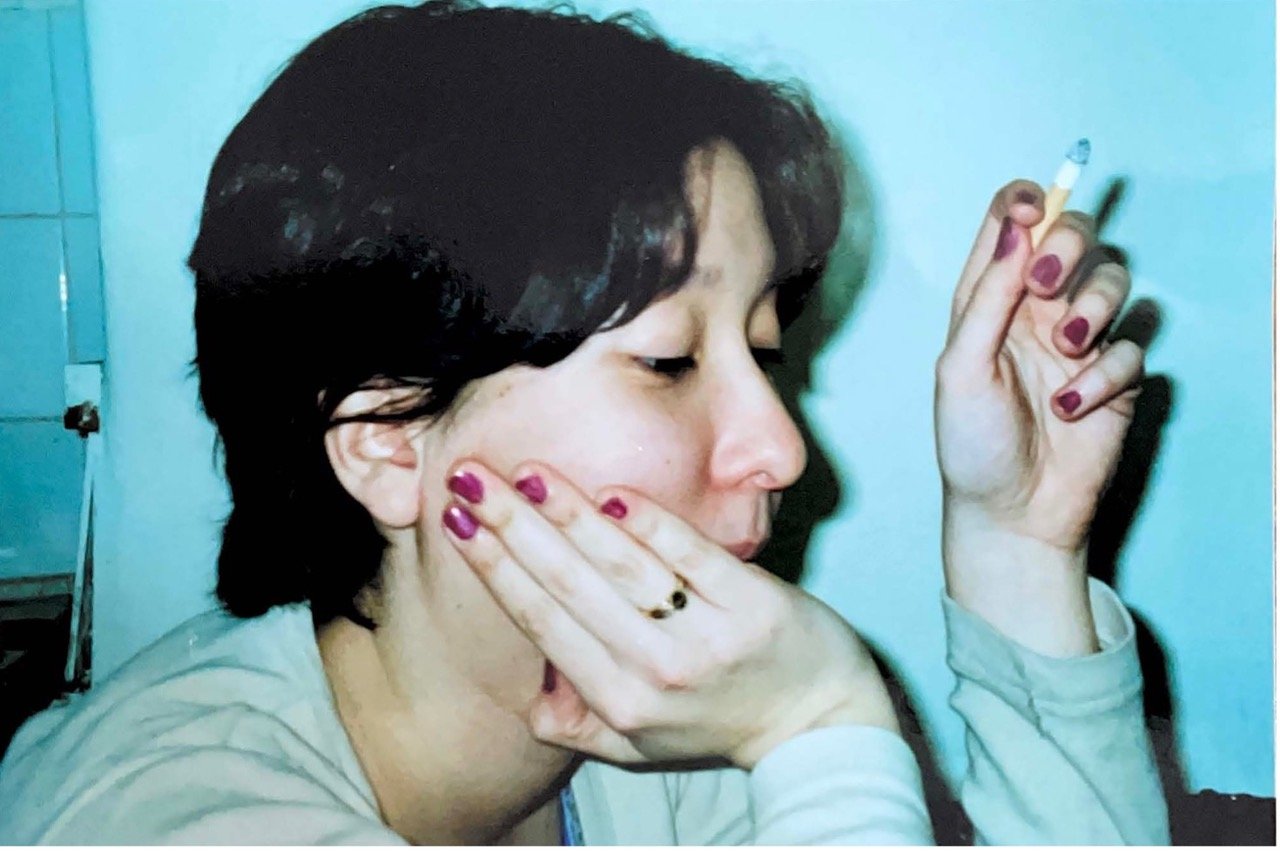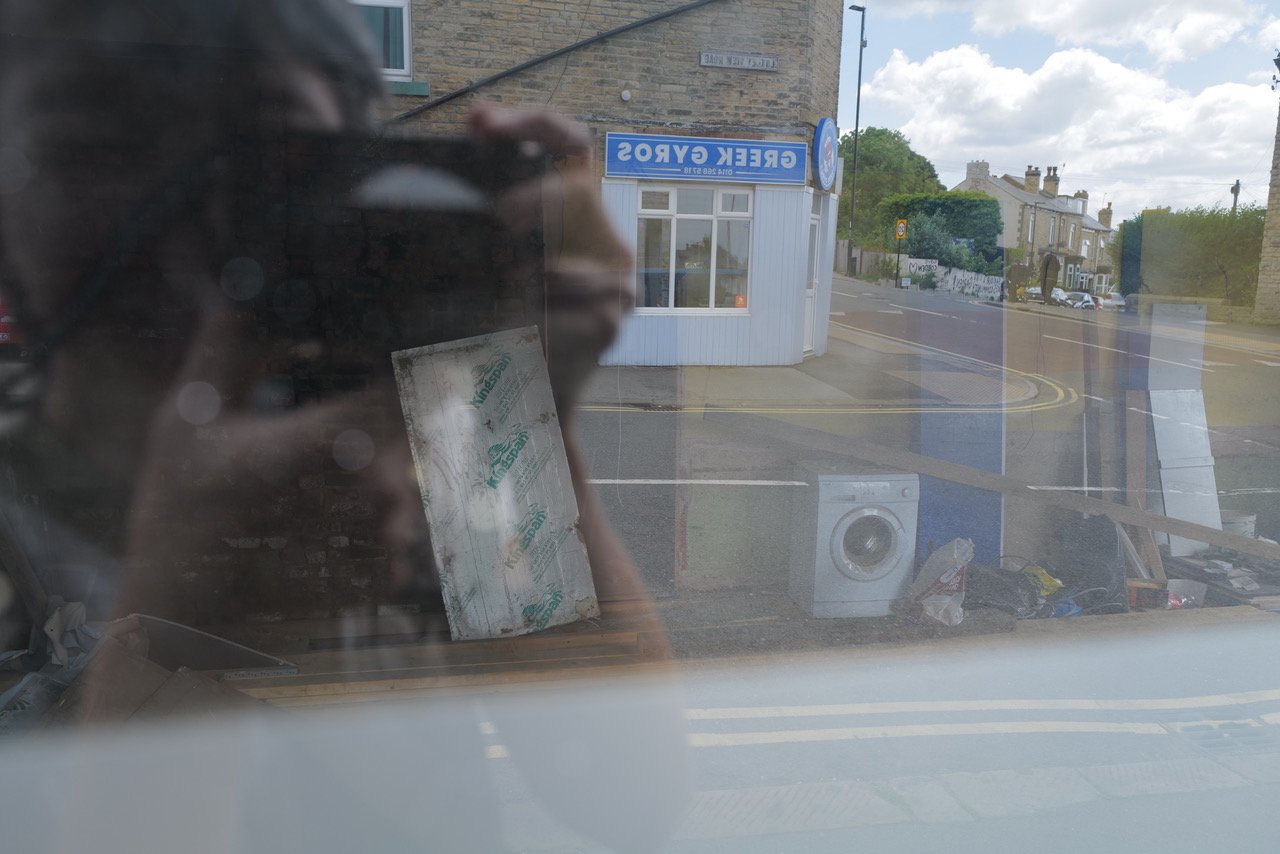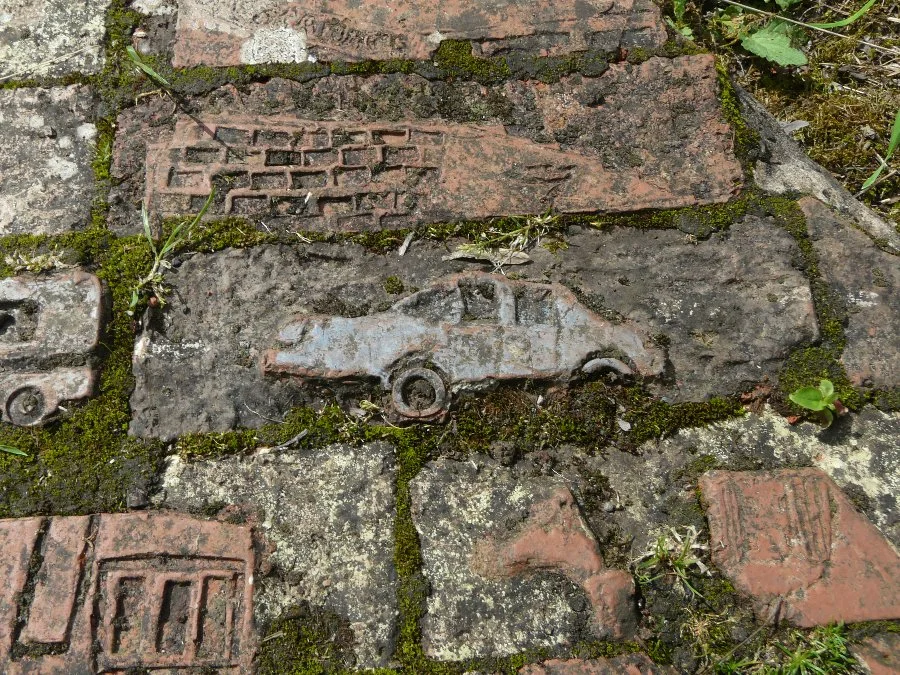Minor Moorlands Roads – Part Two
/During the summer of 2022, Emily Oldfield set out walking the minor roads pushing into the moors around the town of Todmorden, West Yorkshire – many of them traversing and toying with the county boundary into Lancashire. Emily has long-been interested in edgeland spaces, and these roads in particular as routes of intimacy and abandonment simultaneously; built with great intent by former generations, now rarely-used – places that are neither footpath nor main road, where the pedestrian could then be seen as another aspect of the ‘edge’. When feeling ‘on the edge’, to choose these routes can be paradoxically a place of solace, possibilities, even power.
The walks – published here on Elsewhere in a three-part series – are an exploration of intimate abandon, loss and yet the courses that connect us – chiefly, love.
Stones Lane
We step into them every day – human remains. From the pavement underfoot to the paths we take, all are a past push… not a mere trace or fragment, but a site of sheer force and cold sweat.
It is easy to package ‘the past’ as something abstract; an echo in what we say about a place, a sort of ether that runs between the fingers of a hand gesture. Over there. But man-moved stone serves up the past somehow even closer to the present, as presence, an almost-paradox that pulls us further towards it.
This morning I take the lanes heading towards Stones, a scattering of farmsteads situated high on the hills above Todmorden, close to the dark clutch of Dobroyd Castle; a site of Victorian extravagance now scarred-black and haunted by its own intended splendour. So much moved stone still stirs here – from the weathered warp of the buildings I mention, to the lie of the lane. I scatter pebbles as I walk, dust dredging peat-pickled boots as I look at the dark hump of the hills towards Bacup. I wonder whose tread pressed form to fragments before me, who first laid the course, rolled the rock that now is the route.
My musing is interrupted by the fourth tallest standing stone in Yorkshire. A looming bolt of blackened by time, it spears the edge of a farmer’s field –around 12-feet tall and bolstered at the base by a rough ring of hewn rocks. Blasted by factory fumes and the bitter bite of persistent Pennine winds, its dark edges give it the demeanour of a far-flung weathervane. A lightning rod. A question mark with no stop.
But I stop. Perhaps there is an absence in us –an inherited ancestral ache –that angles us to the stance of certain standing stones, how the solo walker finds their body flexing slightly to match its bearing. Falling into those before us. For how many bodies bore this great rib of rock upright?
And when? Surprisingly little information arises about this stone, with no agreed date on when it was set up. Records exist of it being present by 1921, but no known reference before then. Not even a name.
It is a tongue in the mouth of a time we have no words for. It may well have still been standing in previous centuries, erected as a monument to the Great War, even the Battle of Waterloo.
Or older.
Yet the implications of modernity could be seen to stain. Why is that? This stone waits, straddling the border between monument and monolith, track and field, logged and lost. Wavering.
And how when we waver, we reach for rock. The craving to stand in stone seems a human one, time-over: monoliths, buildings, byways, graves. Monuments not only of memory, but for memory. We all become it. I lean against the layers of touch, the sun-soaked rain-rinsed hours of finger-cracking contact, baked into the bulk of the drystone wall. I lean and lean, feel its unknown weight pushing my tissues closer to bone. And still I can’t reach the stone. No human armspan could from here.
Perhaps it is this ungraspable intention, the tactile unknown, that draws us in particular to menhirs; standing stones.
So we keep reaching.
And I keep walking.
Doghouse Lane
Steep slopes draw abandon to the surface. I think about it as I take on the tarmac of Doghouse Lane, a track arching up out of Todmorden and unspooling over the moors to Cornholme. The initial incline is unrelenting, the course quickly gaining ascent as it pushes above the town, as desperate as an outstretched arm. Get out.
Breath builds behind each footfall, arms loosen, and I feel the familiar angst under my ribs dissipate into something else. Each inhalation echoes through the body. I am drawn to walking these minor moorland roads – typically unfashionable and unpublicised routes, often overlooked as the territory of the occasional land-rover, nearby farmer and the lost. Here the walker encounters the road –a craft of human hardship and hiccup in the land simultaneously – alongside the pummelled patchwork of South Pennine moorland. We become the borders, occupy an edge.
Abandon. Mind and body orientate to the undulations of terrain, thoughts fuse. I quickly pass the florid green of cultivated trees above Centre Vale Park and push on amidst the unfolding brushwork of burgundy, brown and off-yellow moorland. Wind hits every exposed angle of my face. I find myself simultaneously an onlooker and an accomplice as the landscape loosens like a shaken sheet, moving with my grasping stare and eager tread.
A few scattered farms fleck the opening aspect of landscape, and the occasional large car passes – somehow cold and impersonal. I keep walking, the interlocking valleys of the Cliviger Gorge on one side and Walsden on the other opening up, spangled by interlocking sunlight and low-lying cloud. Inherited abandon. The very road beneath my feet is a flex of it, forged in a past where it meant more than just an occasional, isolated track. Its name darts between possibilities; Doghouse becoming Parkin Lane, then Flower Scar Road, then Tower Causeway, ending as Carr Road. Furrowed edges tell of agricultural attempts ages back, now wandering half-shorn sheep occupy. They drift into the single-file road in the absence of any fence or wire.
I drift too, body buffeted by wind and warm coils of temperamental sunshine. In these moorlands, the breeze breathes through industrial remains as much as it rolls the cry of the curlew, the pheasants trembling trill. On my left, the hills bordering the East Lancashire town of Bacup push up, their blown-brown backs intersected by turbines, pylons and brooding pine plantations.
And then I stumble into Sourhall. An old row of terraced cottages marks the site of something so much bigger. A public information board tells me of this later on the route, far-flung and stark like the most melancholy of memorials. Out of place. For the cottages, and a rather uncanny estate of half-finished new-builds behind them, tell little themselves of a former factory (Peel Mill), later to become a Smallpox Isolation Hospital in 1874. Industry becomes illness. Exposure becomes isolation.
Inherited abandon. The surge within myself I meet in walking the weave of these moorland roads. And when I wonder of how the ill would have watched the thrashing, flexing moor arch around them, I pull my coat closer and keep the route.
***
Emily Oldfield is a writer especially drawn to exploring landscape, the feel of place and relationships to it within her work. Born in Burnley in 1995 and growing up in the East Lancashire town of Bacup, her first poetry pamphlet Grit (published by Poetry Salzburg, March 2020) explores the history and folklore of the Rossendale Valley of her childhood. Her second poetry pamphlet (also with Poetry Salzburg) is titled Calder and due in 2022, largely exploring the Upper Calder Valley, West Yorkshire - especially around the town of Todmorden, where she currently lives. Emily is now working on a book and probably wandering somewhere in the West Yorkshire/East Lancashire edgelands.


